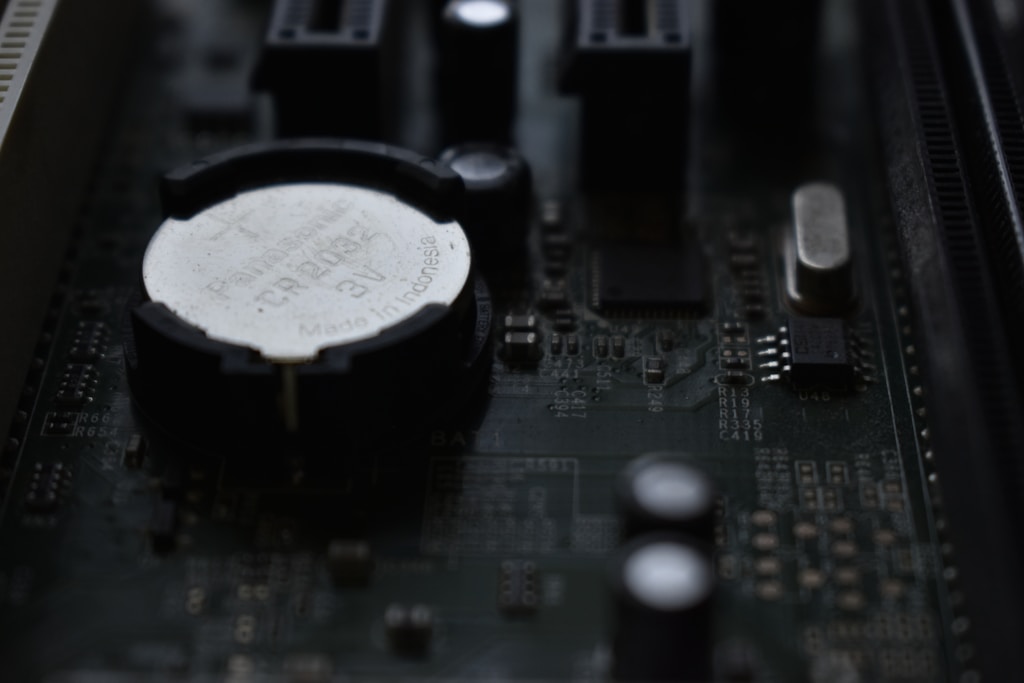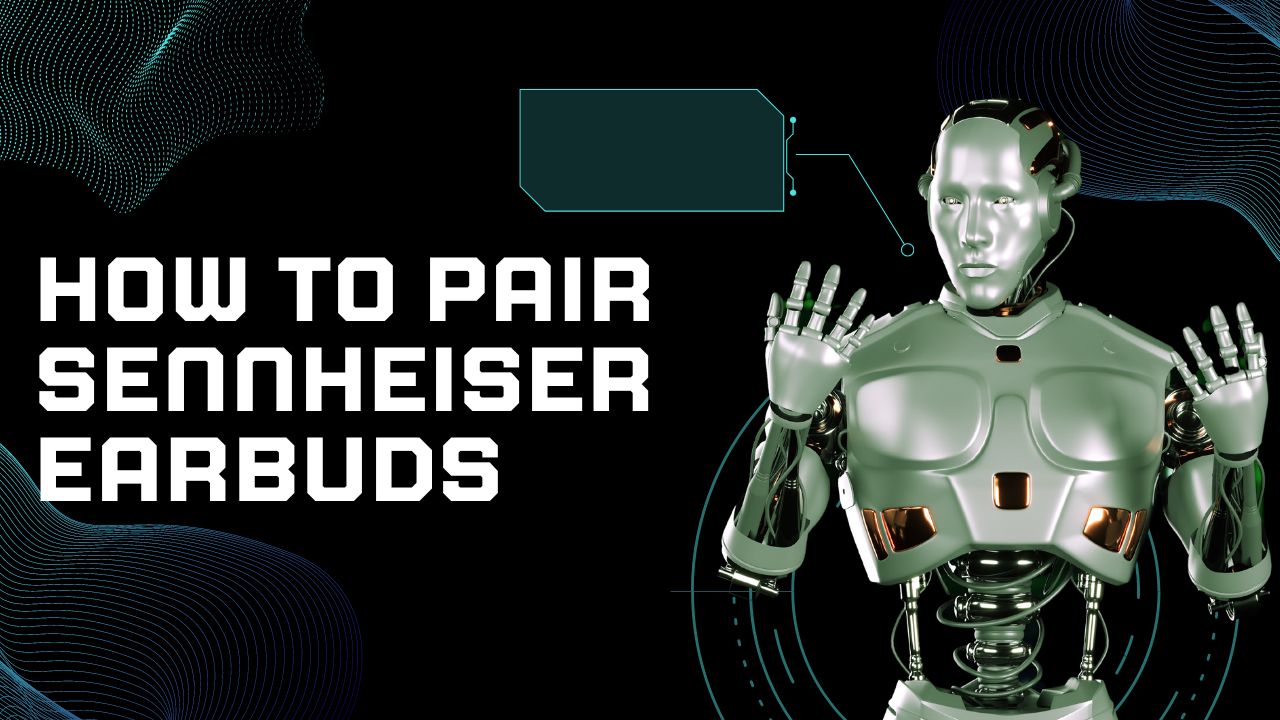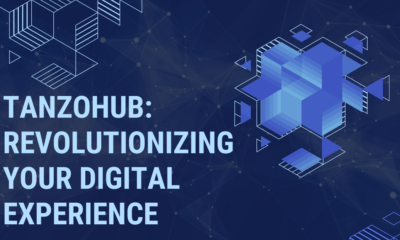TECHNOLOGY
Custom Embedded Systems. Revolutionizing Technology Across Industries

Custom embedded systems (https://conclusive.tech/) have emerged as a pivotal force driving innovation and efficiency across various industries. These systems, designed to perform specific tasks within larger systems, are integral to the functionality of countless devices and applications. From consumer electronics to industrial automation, custom embedded systems offer tailored solutions that meet the unique requirements of each application, ensuring optimal performance, reliability, and functionality.
Understanding Custom Embedded Systems
Custom embedded systems are specialized computing systems designed to perform dedicated functions within a larger system. Unlike general-purpose computers, embedded systems are engineered to execute specific tasks, often with real-time constraints. These systems comprise hardware and software components tailored to the needs of the application, ensuring seamless integration and efficient operation.
The customization aspect of embedded systems involves designing and configuring both hardware and software to meet the exact specifications of the target application. This process requires a deep understanding of the application’s requirements, including performance metrics, power consumption, size constraints, and environmental conditions. By addressing these factors, custom-embedded systems can deliver superior performance and reliability compared to off-the-shelf solutions.
Applications of Custom Embedded Systems
Custom embedded systems are ubiquitous in modern technology, playing a critical role in a wide range of applications. In the automotive industry, embedded systems are essential for controlling various functions, from engine management and braking systems to infotainment and navigation. These systems must meet stringent safety and performance standards, making customization vital to their success.
In the healthcare sector, custom-embedded systems are used in medical devices such as pacemakers, MRI machines, and patient monitoring systems. These applications demand high precision, reliability, and real-time performance, which can only be achieved through tailored embedded solutions. Customization ensures that these systems can operate flawlessly under specific conditions and meet regulatory requirements.
Industrial automation also heavily relies on custom embedded systems. These systems control machinery, monitor production processes, and ensure safety in manufacturing environments. Customization allows for the integration of sensors, actuators, and communication interfaces that are specific to the needs of each industrial application. This results in increased efficiency, reduced downtime, and enhanced safety.
Benefits of Custom Embedded Systems
The primary advantage of custom-embedded systems is their ability to provide optimized solutions tailored to the exact needs of the application. This level of customization ensures that the system performs its intended function with maximum efficiency and reliability. By designing hardware and software components specifically for the application, engineers can eliminate unnecessary features and focus on critical performance aspects.
Another significant benefit is the ability to meet stringent performance and reliability requirements. Custom embedded systems can be designed to operate in harsh environments, withstand extreme temperatures, and perform under high levels of stress. This makes them ideal for applications in aerospace, defense, and industrial sectors where failure is not an option.
Custom embedded systems also offer improved security. In an era where cyber threats are increasingly sophisticated, the ability to design security features into the hardware and software from the ground up is invaluable. Custom solutions can incorporate advanced encryption, secure boot processes, and tamper-resistant features, providing a robust defense against potential attacks.
The Design Process of Custom Embedded Systems
Designing custom embedded systems is a complex and iterative process that requires close collaboration between hardware and software engineers. The process begins with a thorough understanding of the application’s requirements. This involves gathering detailed specifications, including performance metrics, power consumption limits, size constraints, and environmental conditions.
Once the requirements are defined, the next step is to design the hardware architecture. This involves selecting the appropriate microcontroller or microprocessor, memory components, and peripheral interfaces. The hardware design must balance performance, power efficiency, and cost while ensuring compatibility with the application’s requirements.
Simultaneously, the software development process begins. This involves writing the firmware and application code that will run on the hardware. The software must be optimized for the target hardware, ensuring efficient use of resources and real-time performance. This stage may also involve developing custom drivers, communication protocols, and user interfaces.
The hardware and software components are then integrated and tested to ensure they work together seamlessly. This involves rigorous testing and validation processes to identify and address any issues. The system must undergo various tests, including functional testing, performance testing, and environmental testing, to ensure it meets the application’s requirements.
Once the system passes all tests, it can be deployed in the target application. Even after deployment, continuous monitoring and maintenance are necessary to ensure long-term reliability and performance. This may involve updating the software, replacing faulty components, and making design modifications based on feedback from the field.
Challenges in Developing Custom Embedded Systems
Despite their numerous benefits, developing custom-embedded systems presents several challenges. One of the primary challenges is the complexity of the design process. Customization requires a deep understanding of both the application and the underlying technology. This demands a high level of expertise and experience, making it a resource-intensive process.
Another challenge is the need for extensive testing and validation. Ensuring that the system meets all performance, reliability, and safety requirements involves rigorous testing under various conditions. This process can be time-consuming and costly, particularly for applications in regulated industries such as healthcare and aerospace.
Additionally, the rapid pace of technological advancement poses a challenge. Engineers must stay abreast of the latest developments in hardware and software technologies to ensure that their designs remain competitive. This requires continuous learning and adaptation, as well as a willingness to invest in new tools and techniques.
The Future of Custom Embedded Systems
The future of custom embedded systems is bright, driven by ongoing advancements in technology and the increasing demand for specialized solutions. The rise of the Internet of Things (IoT) is a significant driver, as it requires embedded systems to manage and process data from a multitude of connected devices. Customization is crucial to ensure that these systems can handle the unique requirements of each IoT application.
Artificial intelligence (AI) and machine learning (ML) are also expected to play a significant role in the future of embedded systems (https://conclusive.tech/services/edge-computing/). Integrating AI and ML capabilities into embedded systems can enhance their performance, enable real-time decision-making, and provide advanced features such as predictive maintenance and autonomous operation. Customization will be essential to optimize these capabilities for specific applications.
Furthermore, advancements in semiconductor technology will continue to push the boundaries of what is possible with embedded systems. Smaller, more powerful, and more energy-efficient components will enable the development of more sophisticated and capable systems. Custom embedded systems will benefit from these advancements, offering even greater performance and functionality.
Conclusion
Custom embedded systems are at the heart of modern technological innovation, providing tailored solutions that meet the specific needs of various applications. Their ability to deliver optimized performance, reliability, and security makes them indispensable across industries such as automotive, healthcare, and industrial automation. Despite the challenges involved in their development, the benefits of custom-embedded systems are undeniable, driving efficiency, safety, and innovation.
As technology continues to advance, the role of custom-embedded systems will only grow in importance. The integration of AI, IoT, and advanced semiconductor technologies will open new possibilities for these systems, enabling more sophisticated and capable solutions. By continuing to invest in the development of custom embedded systems, businesses can stay at the forefront of technological innovation, ensuring their competitiveness in an increasingly digital world.
TECHNOLOGY
Digital Mortgage Solutions. Transforming the Home Loan Industry

The mortgage industry has long been characterized by complex, paper-intensive processes that often lead to delays, inefficiencies, and customer dissatisfaction. However, the advent of digital mortgage solutions is revolutionizing how lenders and borrowers interact, streamlining the home loan process, and enhancing the overall experience. Digital mortgage solutions (https://livebank24.com/digital-mortgage-solution/) leverage advanced technologies such as artificial intelligence (AI), machine learning (ML), blockchain, and cloud computing to automate and simplify various aspects of the mortgage lifecycle. This transformation is not only making the process faster and more efficient but also improving accuracy, transparency, and accessibility.
The Evolution of Digital Mortgage Solutions
Digital mortgage solutions emerged as a response to the growing demand for a more efficient and user-friendly mortgage process. Traditional mortgage processes involve extensive paperwork, multiple intermediaries, and lengthy approval times, which can be frustrating for borrowers and costly for lenders. The digitization of mortgage services aims to address these challenges by automating document management, reducing manual errors, and speeding up the approval process.
The initial phase of digitization focused on creating online platforms for mortgage applications, allowing borrowers to complete and submit applications electronically. Over time, these platforms have evolved to include sophisticated features such as automated document verification, digital signatures, and real-time status updates. Today, comprehensive digital mortgage solutions encompass the entire mortgage lifecycle, from application and underwriting to closing and servicing, providing a seamless and integrated experience for all stakeholders.
Key Components of Digital Mortgage Solutions
Digital mortgage solutions comprise several key components that work together to streamline the mortgage process. One of the fundamental elements is the digital application portal, which allows borrowers to apply for mortgages online. These portals typically feature user-friendly interfaces, intuitive navigation, and interactive tools that guide borrowers through the application process. They also enable the secure upload and storage of required documents, reducing the need for physical paperwork.
Another critical component is automated underwriting, which leverages AI and ML algorithms to assess borrowers’ creditworthiness and determine loan eligibility. Automated underwriting systems analyze a wide range of data points, including credit scores, income, employment history, and financial assets, to make informed decisions quickly and accurately. This automation not only speeds up the underwriting process but also minimizes the risk of human error and bias.
Digital verification and validation tools are also integral to modern mortgage solutions. These tools use advanced technologies to verify the authenticity of documents and validate the accuracy of information provided by borrowers. For example, income and employment verification systems can automatically cross-check information with external databases, while property appraisal tools can use AI to estimate property values based on comparable sales data.
Blockchain technology is another innovative component of digital mortgage solutions. Blockchain provides a secure, immutable ledger for recording and tracking transactions, ensuring transparency and reducing the risk of fraud. By enabling the secure sharing of data among parties involved in the mortgage process, blockchain can enhance collaboration and trust while reducing administrative overhead.
Benefits of Digital Mortgage Solutions
The adoption of digital mortgage solutions offers numerous benefits for both lenders and borrowers. For lenders, digital solutions can significantly reduce operational costs by automating labor-intensive tasks and eliminating the need for physical document storage. This automation also allows lenders to process more applications in less time, increasing their capacity and scalability. Furthermore, digital solutions enhance compliance with regulatory requirements by providing audit trails and ensuring that all processes are documented accurately.
For borrowers, digital mortgage solutions offer a more convenient and transparent experience. Borrowers can complete applications at their own pace, from the comfort of their homes, without the need for multiple in-person visits to the lender’s office. Real-time status updates keep borrowers informed throughout the process, reducing uncertainty and anxiety. Additionally, digital solutions often provide educational resources and interactive tools that help borrowers understand their options and make informed decisions.
Challenges and Considerations
While digital mortgage solutions offer significant advantages, their implementation is not without challenges. One of the primary concerns is data security. The mortgage process involves the collection and storage of sensitive personal and financial information, making it a prime target for cyberattacks. Lenders must invest in robust cybersecurity measures to protect data from unauthorized access and breaches. This includes encryption, multi-factor authentication, and regular security audits to identify and mitigate vulnerabilities.
Another challenge is the need for integration with existing systems and processes. Many lenders rely on legacy systems that may not be compatible with modern digital solutions. Integrating new technologies with these systems can be complex and time-consuming, requiring careful planning and execution. Lenders must also ensure that their staff are trained to use new digital tools effectively and that borrowers are provided with adequate support throughout the transition.
Additionally, regulatory compliance remains a critical consideration. The mortgage industry is heavily regulated, and digital solutions must comply with a wide range of federal, state, and local regulations. Lenders must stay abreast of regulatory changes and ensure that their digital processes meet all legal requirements. This may involve working closely with legal and compliance teams to develop policies and procedures that align with regulatory standards.
The Future of Digital Mortgage Solutions
The future of digital mortgage solutions looks promising, with continued advancements in technology driving further innovation and efficiency. AI and ML are expected to play an even more significant role in automating complex tasks, such as fraud detection and risk assessment. Predictive analytics can help lenders identify trends and make data-driven decisions, improving the accuracy and speed of the mortgage process.
The use of blockchain technology is likely to expand, providing greater transparency and security for all parties involved. Smart contracts, powered by blockchain, could automate the execution of mortgage agreements, reducing the need for intermediaries and speeding up the closing process. Additionally, advancements in biometric authentication could enhance the security of digital transactions, providing a seamless and secure experience for borrowers.
Moreover, the increasing adoption of mobile technology will further enhance the accessibility and convenience of digital mortgage solutions. Mobile applications can provide borrowers with real-time access to their mortgage information, allowing them to manage their loans and make payments on the go. Augmented reality (AR) and virtual reality (VR) technologies could also revolutionize the property viewing and appraisal process, enabling virtual tours and remote assessments.
Conclusion
Digital mortgage solutions are transforming the home loan industry, offering significant benefits for lenders and borrowers alike. By automating and streamlining various aspects of the mortgage process, these solutions enhance efficiency, accuracy, and transparency. However, the successful implementation of digital mortgage solutions requires careful consideration of data security, system integration, and regulatory compliance – https://livebank24.com/.
TECHNOLOGY
Introducing Tidbyt 2

In an era where the line between the physical and digital realms continues to blur, Tidbyt 2 emerges as a beacon of innovation, seamlessly integrating into the lives of tech enthusiasts, small business owners, and digital marketers. This post will take you on a deep dive into Tidbyt 2, exploring its features, benefits, and real-world applications that underscore its significance in today’s fast-paced tech landscape.
Introduction to Tidbyt 2
Features
Tidbyt 2 comes packed with an array of features designed to enhance user engagement and streamline business operations. Its customizable display allows users to tailor information feeds, providing updates on weather, stocks, public transportation, and more, directly from a retro-style, pixelated screen that adds a unique charm to any setting.
Specifications
The Tidbyt 2 device raises the bar with its advanced specifications, catering to the modern needs of consumers and businesses alike. It boasts a compact yet versatile design, making it ideal for various environments, from the bustling office desk to the tranquil nightstand at home. Key specifications include:
- Display: High-resolution, 64×32 pixel LED matrix, capable of producing 16 million colors, offering vibrant and clear visuals whether day or night.
- Connectivity: Equipped with Wi-Fi support, ensuring seamless updates and synchronization across devices and platforms.
- Build Quality: Crafted from sustainably sourced wood and featuring a matte finish, the Tidbyt 2 stands out for its durability and eco-friendly design.
- Power: Utilizes a USB-C connection for power, compatible with most modern adapters and portable batteries, providing flexibility in placement and usage.
- Dimensions: Compact and space-efficient, it measures just the right size to be noticeable without taking up unnecessary space.
- Customizability: Beyond its pre-set functions, developers and tech enthusiasts can create and share their own apps or widgets via the Tidbyt API, adding endless personalization possibilities.
Benefits
The benefits of Tidbyt 2 extend beyond its aesthetic appeal, offering practical solutions for businesses and marketers. It serves as a dynamic tool for displaying real-time data, promotional messages, and even personalized content, enabling organizations to maintain constant communication with their audience in a captivating and innovative manner.
Real-World Applications
In various sectors, from retail to hospitality, Tidbyt 2 is revolutionizing the way businesses interact with their customers. By integrating Tidbyt 2 into their operations, companies can not only enhance their customer experience but also streamline internal communications, making it an invaluable asset in today’s competitive market.
Evolution of Tidbyt 2
The evolution of Tidbyt 2 is a testament to the continuous innovation at the intersection of technology and user experience. This section highlights the key phases in its development and the progressive features that have defined its trajectory.
Initial Concept and Design
The inception of Tidbyt 2 was driven by the need for a more interactive and visually appealing way to display information in real-time. The initial design focused on simplicity, merging traditional pixel art with modern technology to create a device that was both functional and nostalgic.
Technological Advancements
Over time, Tidbyt 2 has incorporated various technological advancements, improving its connectivity, display capabilities, and overall functionality. This includes the transition from a simpler LED display to a high-resolution matrix capable of producing a wider range of colors and more detailed images.
Expansion of Customizability
Recognizing the diverse needs of its users, the Tidbyt team has significantly expanded the device’s customizability. The introduction of an open API allowed developers and users alike to craft personalized apps and widgets, transforming Tidbyt 2 into a versatile platform for both personal use and business applications.
Future Prospects
Looking ahead, Tidbyt 2 is set to continue its evolution, with plans to integrate more advanced AI capabilities, enhance user interactivity, and expand its application ecosystem. These developments promise to further cement Tidbyt 2’s place as a pioneering device in the realm of tech engagement.
Enhancing Customer Engagement with Tidbyt 2
Features for Engagement
Tidbyt 2 introduces several features aimed at boosting customer engagement in unique and interactive ways. Its ability to display customized messages and graphics allows businesses to catch the eye of their audience more effectively than traditional digital signage. With Wi-Fi connectivity, updates can be made in real-time, ensuring that the content is always current and relevant. This flexibility makes it possible to celebrate special occasions, offer flash promotions, or simply share uplifting messages to enhance customer mood and engagement.
Benefits for Businesses
The benefits of integrating Tidbyt 2 into business operations are multifold. Firstly, it offers a novel way of capturing customer attention, standing out in a crowded digital landscape. Secondly, its ease of updating and customization leads to significant savings in time and resources, as businesses can swiftly adapt their messages without needing complex programming or external support. Lastly, Tidbyt 2 fosters a sense of community and connection through personalized communication, translating into higher customer satisfaction and loyalty, critical factors in the success of any business in today’s dynamic market environment.
Enhanced Connectivity
One of the standout features of Tidbyt 2 is its enhanced connectivity, supporting a wider range of integrations that make it an indispensable tool for businesses and marketers. By providing real-time updates and insights, Tidbyt 2 becomes a central hub of information, keeping users informed and engaged.
Streamlined Design
Tidbyt 2’s design is both elegant and practical, making it a fitting addition to any workspace or home. Its sleek form factor and customizable LED displays are designed to catch the eye while providing valuable information at a glance.
Use Cases
Small Businesses
For small business owners, Tidbyt 2 serves as a digital assistant, offering a novel way to display important metrics, from sales figures to customer feedback scores. It can also act as a unique promotional tool, displaying special offers and announcements in-store to attract customer attention.
Digital Marketers
Digital marketers can leverage Tidbyt 2 to track campaign performance in real time, monitor social media engagement, and stay ahead of trends. Its integration capabilities mean that key metrics from various platforms can be consolidated into one visually appealing display.
Tech Enthusiasts
Tech enthusiasts will appreciate Tidbyt 2’s open platform, which allows for endless customization and tinkering. Whether it’s developing new apps or experimenting with different data visualizations, Tidbyt 2 is a playground for creativity.
Comparison with Tidbyt 1
Upgrade in Features
The shift from Tidbyt 1 to Tidbyt 2 marks a significant upgrade in features, showcasing an enhanced user interface, broader connectivity options, and increased customization capabilities. While Tidbyt 1 laid the groundwork for real-time information display, Tidbyt 2 expands on this foundation, offering users a more refined experience with smoother performance and richer visuals.
Enhancements in Design
Design-wise, Tidbyt 2 represents a leap forward, adopting a more streamlined and versatile aesthetic that fits comfortably in a wider range of environments—from professional workspaces to cozy home settings. The device’s form factor has been refined for better durability and ease of use, ensuring that it not only looks good but is also built to last.
Connectivity and Integration
In terms of connectivity, Tidbyt 2 surpasses its predecessor by integrating more seamlessly with a vast array of apps and services. This allows for a far more diverse range of applications, from displaying intricate data visualizations to integrating with smart home systems, thereby enhancing the overall user experience.
With these improvements, Tidbyt 2 does not merely replace Tidbyt 1; it redefines the possibilities for interactive digital displays, offering both businesses and consumers a more powerful, versatile, and engaging tool for communication and visualization.
SEO and Engagement with Tidbyt 2
The integration of Tidbyt 2 into digital marketing strategies presents a unique advantage in terms of SEO (Search Engine Optimization) and online engagement. Utilizing Tidbyt 2’s dynamic display capabilities can indirectly influence a brand’s online visibility and audience interaction, offering a distinct edge in digital marketing efforts.
Boosting Online Presence
Tidbyt 2’s ability to display real-time data can be leveraged to promote SEO strategies by featuring trending keywords or hashtags, directly from social media feeds or search trends. This not only captures the attention of in-store customers but can also encourage social media shares and interactions, leading to increased online visibility.
Enhancing Audience Engagement
By customizing Tidbyt 2 displays to feature user-generated content, businesses can foster a deeper sense of community and engagement. Highlighting customer reviews, photos, or contest results in real-time encourages more interaction from the audience, both in-person and online. This level of engagement can significantly impact a brand’s social proof, leading to further online discovery and interaction.
Innovating Content Strategies
Tidbyt 2 offers an innovative platform for content strategies, enabling brands to break free from conventional digital confines. Integrating live data, whether it’s trending topics, live poll results, or even real-time weather updates, adds a layer of interaction and relevance to the customer experience that purely online content cannot achieve alone.
Through these strategies, Tidbyt 2 not only serves as a tool for enhancing customer experience but also as a creative medium for boosting SEO and digital engagement, carving out new avenues for interaction in the rapidly evolving digital landscape.
Future Developments
Extended App Ecosystem
The next phase of Tidbyt 2’s evolution aims at significantly broadening its app ecosystem. This will involve partnering with developers worldwide to create an even more diverse range of applications, from productivity tools to entertainment and educational content, ensuring that Tidbyt 2 remains at the forefront of digital display technology.
Advanced AI Features
The roadmap for Tidbyt 2 includes the integration of advanced AI features, aimed at delivering a more personalized and interactive user experience. Upcoming updates will enable Tidbyt 2 to learn from user interactions, optimizing content display based on individual preferences and patterns. This AI-driven approach will not only enhance the utility of Tidbyt 2 for personal use but also offer businesses unique insights into customer behaviors and preferences.
Personalized Content Curation
AI algorithms will curate content specifically tailored to the user’s interests and needs, transforming Tidbyt 2 into a proactive assistant that not only displays information but also suggests content based on relevance and timeliness.
Voice Interaction
Voice command capabilities are also on the horizon, allowing users to interact with Tidbyt 2 hands-free. This feature will facilitate easier access to information and control, making it more convenient for users to request specific data displays or updates without manual input.
Predictive Analytics
For businesses, AI-enhanced predictive analytics will provide valuable foresights into market trends, customer behavior, and even inventory management, making Tidbyt 2 an invaluable tool for strategic planning and decision-making.
By integrating these advanced AI features, Tidbyt 2 is set to redefine the boundaries of interactive digital displays, offering users both convenience and cutting-edge technology in one compact device.
Sustainability Initiatives
In response to growing environmental concerns, the development team is also focusing on sustainability. Future models of Tidbyt 2 will prioritize energy efficiency, use of recycled materials, and longer product lifecycles, reinforcing the company’s commitment to minimizing environmental impact.
Integration with Wearable Technology
A forthcoming area of expansion is the integration with wearable technology, allowing users to seamlessly connect their fitness trackers, smartwatches, and health monitoring devices with Tidbyt 2. This will enable the display of health metrics, workout summaries, and wellness-related notifications directly on the Tidbyt 2, promoting a healthier lifestyle among users.
Through these future developments, Tidbyt 2 is set to redefine not only how information is displayed but how it interacts with the fabric of our daily lives, making technology more personal, accessible, and aligned with individual needs and global sustainability goals.
Conclusion
tidbyt 2 stands as a testament to the power of thoughtful design, robust features, and practical applications in bridging the gap between technology and everyday life. For tech enthusiasts, small business owners, and digital marketers, Tidbyt 2 offers a unique opportunity to stay connected, informed, and ahead of the curve. Explore the possibilities with Tidbyt 2 and see how it can transform your approach to technology, engagement, and innovation.
More: Unlocking the Mysteries of Pi123: The Ultimate Software Solution
FAQs
Q: What is Tidbyt 2?
A: Tidbyt 2 is an advanced digital display device that offers seamless integration with a variety of apps and services. It is designed to fit into both professional and personal spaces with its sleek, durable design and to provide a platform for displaying dynamic content.
Q: How does Tidbyt 2 integrate with smart home systems?
A: Tidbyt 2 integrates with smart home systems through compatible apps and services. This allows users to control and automate their home environment directly from the Tidbyt 2 display or accompanying mobile app.
Q: Can Tidbyt 2 be used for digital marketing?
A: Yes, Tidbyt 2 can be effectively used for digital marketing. Its ability to display real-time data, social media feeds, and user-generated content makes it a powerful tool for enhancing online presence and engagement.
Q: What future developments are planned for Tidbyt 2?
A: Future developments for Tidbyt 2 include expanding its app ecosystem, introducing advanced AI features, implementing sustainability initiatives, and integrating with wearable technology.
Q: How does Tidbyt 2 support sustainability?
A: The development team of Tidbyt 2 is committed to sustainability by focusing on energy efficiency, using recycled materials for manufacturing, and extending the product’s lifecycle.
Q: Is Tidbyt 2 compatible with wearable devices?
A: Future updates for Tidbyt 2 aim to integrate it with various wearable devices, enabling the display of health metrics and wellness notifications to promote a healthier lifestyle among users.
TECHNOLOGY
How to Pair Sennheiser Earbuds

how to pair Sennheiser earbuds In a world where the quest for the perfect sound experience is never-ending, Sennheiser earbuds have emerged as the beacon for audiophiles, tech enthusiasts, and music lovers alike. Renowned for their unparalleled audio quality and innovative design, these earbuds promise an immersive listening experience that’s second to none. Whether you’re a long-time fan or new to the Sennheiser family, this guide will walk you through everything you need to know to pair your Sennheiser earbuds and optimize your listening experience.
How to Pair Your Sennheiser Earbuds
Getting Started with Sennheiser
Before you can truly immerse yourself in the superior sound quality of Sennheiser earbuds, it’s essential to pair them correctly with your device. This straightforward process ensures that you’re getting the most out of your listening experience, whether you’re enjoying your favorite music, podcasts, or movies.
Step-by-Step Pairing Instruction
- Turning on Pairing Mode: Start by turning your Sennheiser earbuds into pairing mode. This is usually done by pressing and holding a specific button or combination of buttons as outlined in your earbuds’ user manual.
- Finding Your Earbuds on Your Device: Open the Bluetooth settings on your smartphone, tablet, or computer, and look for your Sennheiser earbuds in the list of available devices.
- Connecting Your Earbuds: Once you’ve located your earbuds on the list, select them to initiate the pairing process. If prompted, enter the pairing code provided in your earbuds manual.
- Confirmation and Setup: After a successful connection, you may hear a confirmation sound or notification. Some models may require further setup or customization through the Sennheiser app.
Optimizing Your Listening Experience
After successfully pairing your Sennheiser earbuds, explore the various features and settings available to customize your listening experience. Many Sennheiser models come with adjustable noise cancellation, equalizer settings, and even personalized sound profiles to enhance your listening sessions.
This initial setup is only the beginning. By properly pairing and customizing your Sennheiser earbuds, you’re unlocking the full potential of your investment, ensuring each note, beat, and detail is heard exactly as intended.
How to Use Your Sennheiser Earbuds
Maximizing Battery Life
To ensure your Sennheiser earbuds are always ready for use, it’s important to understand how to maximize their battery life. Regularly charging your earbuds, avoiding overcharging, and turning them off when not in use can significantly extend their battery life. Many Sennheiser models also offer a companion app that provides real-time battery status and can help manage power more efficiently.
Personalizing Sound Profiles
how to pair Sennheiser earbuds With the Sennheiser app, users can personalize sound settings to suit their listening preferences. This feature allows you to adjust the EQ settings, create and save your sound profiles, and even adapt your listening experience based on your surroundings. Tailoring these settings ensures that whether you’re in a noisy environment or a quiet space, your music sounds exactly how you like it.
Using Touch Controls
how to pair Sennheiser earbuds often come equipped with intuitive touch controls that allow you to play, pause, skip tracks, control volume, and activate voice assistants without having to reach for your device. Familiarizing yourself with these touch gestures can enhance your listening experience, making it more convenient and enjoyable.
Managing Calls and Voice Assistants
how to pair Sennheiser earbuds Your Sennheiser earbuds are not just for music. They can also manage calls and interact with voice assistants, providing a hands-free way to stay connected while on the go. You can answer or end calls with a simple tap, and activate your phone’s voice assistant to send messages, set reminders, or ask questions, all without taking your phone out of your pocket.
By mastering these features, you can enjoy a truly customized and convenient listening experience, making your Sennheiser earbuds an indispensable part of your daily life.
Understanding Sennheiser Earbud Features
Superior Sound Quality
how to pair Sennheiser earbuds are engineered with high-fidelity sound to deliver detailed, dynamic audio performance. This ensures a rich listening experience, from deep bass to clear, crisp highs.
Adaptive Noise Cancellation
With innovative noise-cancelling technology, Sennheiser earbuds allow you to immerse yourself in music, calls, or podcasts without external disturbances. This feature intelligently adjusts to your environment, providing an uninterrupted audio experience.
Customizable Touch Controls
how to pair Sennheiser earbuds come equipped with intuitive touch controls that offer easy access to play, pause, skip tracks, and adjust volume. Some models also allow you to customize touch control settings via the Sennheiser app for a personalized experience.
Long Battery Life
how to pair Sennheiser earbuds Designed for extended use, Sennheiser earbuds offer long battery life on a single charge. With the addition of a charging case, you can enjoy your earbuds throughout the day without worrying about running out of power.
Water and Sweat Resistance
how to pair Sennheiser earbuds models feature water and sweat resistance, making them suitable for workouts and outdoor activities. This durability ensures your earbuds are protected against moisture, allowing you to focus on your exercise and adventures.
By familiarizing yourself with these key features, you can make the most of your Sennheiser earbuds and elevate your audio experience to new heights.
Maintaining Your Sennheiser Earbuds for Optimal Performance
How to pair Sennheiser earbuds to continue to deliver the exceptional sound quality and reliability you’ve grown to love, regular maintenance and care are key. Following best practices for upkeep can extend the life of your earbuds, making every listening session as immersive as the first.
Cleaning Your Earbuds
- Gently Remove Ear Tips: Start by carefully removing the ear tips from each earbud to clean them separately.
- Clean Ear Tips: Wash the ear tips with mild soap and warm water. Rinse thoroughly and allow them to dry completely before reattaching them to the earbuds.
- Wipe Down Earbuds: Using a soft, dry cloth, gently wipe the body
With Smartphones, Laptops, and Tablets
- Activate Pairing Mode: Start by placing your earbuds in the charging case. Open the case and press and hold the pairing button until the LED flashes blue and red, indicating pairing mode is active.
- Select Your Earbuds: On your device, go to the Bluetooth settings and search for available devices. Select your Sennheiser earbuds from the list to initiate the pairing process.
- Confirm Connection: Once connected, you’ll typically hear a confirmation sound through the earbuds, and some devices may also display a confirmation message.
Troubleshooting Tips
If you encounter any issues during the pairing process, consider the following tips:
- Ensure your earbuds are charged and within range of the device.
- Restart the pairing process by forgetting the earbuds in your device’s Bluetooth settings and starting over.
- Refer to the user manual for model-specific instructions, as the process may vary slightly between different Sennheiser earbuds.
Step-by-Step Guide to Pairing Sennheiser Earbuds
This comprehensive guide offers detailed steps to ensure you can seamlessly pair your Sennheiser earbuds with various devices for an unrivaled audio experience.
With Television Sets
- Check TV Bluetooth Compatibility: Ensure your TV supports Bluetooth connections. This is often found in the sound or connectivity settings.
- Activate Pairing Mode on Earbuds: With your earbuds in the charging case, open the case and enter pairing mode by pressing and holding the designated button until the LED indicator flashes.
- Enable Bluetooth on TV: Navigate to the Bluetooth settings on your TV and enable the discovery mode to find new devices.
- Select Your Earbuds: Look for your Sennheiser earbuds on the list of available devices on your TV and select them to establish a connection.
- Verify Connection: A successful connection is usually indicated by a steady LED light on the earbuds and an on-screen confirmation on your TV.
With Gaming Consoles
- Identify Bluetooth Support: Confirm that your gaming console supports Bluetooth audio devices. For consoles without native Bluetooth, you might need an external Bluetooth transmitter.
- Enter Pairing Mode: With the earbuds in the charging case, open the case and press and hold the pairing button to activate pairing mode, indicated by a flashing LED.
- Access Console’s Bluetooth Settings: Navigate to the Bluetooth settings in your console’s system settings and initiate the search for new devices.
- Pair Your Earbuds: Select your Sennheiser earbuds from the list of found devices to connect them to your gaming console.
- Confirmation: Look for an audible or visual confirmation from your console to ensure the earbuds are successfully connected.
By following these steps, you can enjoy the premium sound quality of Sennheiser earbuds with a wide range of electronic devices, enhancing your audio experience during games, movies, and more.
Fixing Common Problems With Pairing
When attempting to pair your Sennheiser earbuds with a device, you may encounter some challenges. Below are some common issues and their solutions to help you overcome these hurdles and enjoy a seamless connection.
Earbuds Not Being Detected
- Refresh the Bluetooth List: Sometimes, simply refreshing the Bluetooth detection list on your device can help.
- Reset the Earbuds: Consult the user manual on how to reset your earbuds to factory settings, which can often resolve detection issues.
Connection Drops or Is Unstable
- Check the Distance: Ensure that your earbuds and the device are within the recommended range (usually under 10 meters without obstructions).
- Remove Interferences: Other wireless devices can interfere with the Bluetooth signal. Try to minimize the use of such devices near your pairing environment.
Pairing With Multiple Devices
- Understand Pairing Limits: how to pair Sennheiser earbuds may have difficulty managing connections to multiple devices. Consult your earbuds manual to understand how to switch between devices smoothly.
Audio Delay or Lag
- Use Low Latency Modes: If your earbuds and device support low latency Bluetooth modes (like aptX Low Latency), ensure they are enabled to reduce audio lag.
- Restart Both Devices: Sometimes, simply restarting both the earbuds and the device can resolve synchronization issues.
By addressing these common issues, you can enhance your experience with your Sennheiser earbuds and enjoy your audio content without interruption.
Tips for Optimizing Your Sennheiser Earbud Experience
Enhancing your listening experience with Sennheiser earbuds goes beyond simply owning them. By adopting a few key practices, you can significantly improve the quality and enjoyment of your audio experience. Here are essential tips to maximize your earbuds’ performance:
Personalize Your Sound Settings
Many Sennheiser models are compatible with the Sennheiser app, allowing you to adjust your earbuds’ sound settings to your personal preference. Experiment with the equalizer settings to find the perfect balance for your favorite genres of music or content.
Stay Updated with Firmware
Regularly check for firmware updates through the Sennheiser app. These updates can improve your earbuds’ performance, introduce new features, and resolve any known issues, ensuring your earbuds are operating at their best.
Optimize Earbud Fit
For the best sound quality and noise cancellation, ensure the earbuds fit securely and comfortably in your ears. Try different sizes of ear tips if your Sennheiser earbuds come with options. A proper fit can greatly enhance sound quality and prevent external noise from interrupting your listening experience.
Utilize Mono Mode
If your Sennheiser earbuds support mono mode, use this feature to extend battery life when you only need one earbud. This is perfect for calls or when you want to stay aware of your surroundings.
Protect Your Earbuds
Even though many Sennheiser earbuds are designed with durability in mind, including water and sweat resistance, it’s important to protect your investment. Avoid exposing your earbuds to extreme temperatures and keep them in their charging case when not in use.
By following these tips, you can ensure that your Sennheiser earbuds provide a sublime audio experience for as long as possible.
Connecting to More Than One Device
Understanding Multipoint Pairing
how to pair Sennheiser earbuds offer multipoint pairing, allowing them to connect to multiple devices simultaneously. This feature enables you to switch audio sources without the need to disconnect and reconnect manually, providing a seamless transition between devices such as a phone and a laptop.
How to Enable Multipoint Pairing
- Check Compatibility: Ensure your earbuds support multipoint pairing by referring to the user manual or product specifications.
- Initial Pairing: Pair your earbuds with the first device following the standard pairing process.
- Pair with Second Device: Without disconnecting from the first device, put your earbuds back into pairing mode and connect them to your second device.
- Switching Between Devices: Some earbuds may automatically manage audio from multiple sources, while others may require manual switching. Refer to your earbuds manual for specific instructions.
Tips for a Smooth Experience
- Prioritize Devices: If possible, set priority levels for connected devices to manage which device takes precedence for calls or media playback.
- Maintain Firmware Updates: Keep your earbuds updated to ensure optimal performance and compatibility with multipoint pairing features.
- Monitor Battery Life: Using multipoint pairing can impact battery life. Keep an eye on your earbuds’ battery levels to avoid unexpected disconnections.
Real User Testimonies
Outstanding Sound Quality
“I’ve been using Sennheiser earbuds for years, and the sound quality is unrivaled. Whether I’m listening to classical music, jazz, or heavy metal, the clarity and depth of sound these earbuds produce never cease to amaze me.” – Alex M.
Durability and Reliability
“As an avid runner, I need earbuds that can withstand a lot of movement and sweat. Sennheiser has never disappointed me. Even after countless marathons, they work as well as they did on day one.” – Samantha W.
Easy Pairing with Devices
“Pairing my Sennheiser earbuds with any device is a breeze. Whether it’s my smartphone, laptop, or gaming console, the process is straightforward and quick. It’s refreshing to have such a seamless connection.” – Derek H.
Exceptional Battery Life
“The battery life on my Sennheiser earbuds is phenomenal. I can go through my entire workday with music playing and still have a battery left. They’re a game-changer for long flights and travel.” – Priya S.
Comfort for Hours
“I’ve always struggled to find earbuds that fit comfortably for extended periods. Sennheiser earbuds came with different ear tip sizes, allowing me to find the perfect fit. I can wear them all day without any discomfort.” – Jorge N.
Making the Most of Your Audio Settings
how to pair Sennheiser earbuds Optimizing the audio settings on your Sennheiser earbuds can dramatically enhance your listening experience. By adjusting these settings, you can tailor the sound to match your personal preference or to better suit the type of content you’re enjoying. Here’s how to get started:
Explore the Equalizer
how to pair Sennheiser earbuds app offers a built-in equalizer that allows you to modify the bass, mids, and treble. Experiment with different combinations to find what best compliments your music or podcasts. Remember, there’s no one-size-fits-all setting—what matters most is what sounds best to you.
Activate Noise Cancellation
For models that feature active noise cancellation, take the time to explore and adjust these settings. This feature can be a game-changer in noisy environments, allowing you to immerse yourself in your audio without external distractions.
Discover Sound Modes
how to pair Sennheiser earbuds come with preset sound modes tailored for different audio types, such as movies, music, or podcasts. These presets adjust the sound profile to enhance your experience depending on what you’re listening to. Explore these modes to find your favorites.
Fine-tune Ambient Sound
how to pair Sennheiser earbuds supports the ambient sound feature, adjusting it can help you stay aware of your surroundings without fully removing the earbuds. This feature is particularly useful in situations where you need to balance awareness with entertainment, such as when walking on busy streets.
By taking the time to adjust and understand these audio settings, you can significantly improve the quality of your listening experience, making every play-through feel more personalized and immersive.
Advanced Features and Add-Ons
Explore the cutting-edge features and additional tools that can elevate your Sennheiser earbuds experience to new heights, offering more control, customization, and convenience.
Customizable Touch Controls
Gain the flexibility to assign specific functions to touch gestures on your earbuds. This customization allows for a more intuitive control scheme that matches your lifestyle and preferences, from adjusting volume to skipping tracks or activating your voice assistant with just a tap.
Wireless Charging Capability
For added convenience, many Sennheiser earbuds models support wireless charging. Simply place your earbuds in their case on a wireless charging pad, and enjoy a hassle-free way to ensure your devices are always ready to go.
Water Resistance Rating
Discover the specific water resistance ratings for your earbuds, providing peace of mind during sweaty workouts or in light rain. This feature ensures your investment is protected against moisture, enabling you to focus on your activity without worry.
Companion App Features
The Sennheiser Smart Control app not only offers an equalizer and sound mode adjustments but also provides firmware updates, battery status monitoring, and the ability to track your earbuds if misplaced. This comprehensive tool enhances your user experience by keeping your earbuds up-to-date and at peak performance.
Voice Assistant Integration
how to pair Sennheiser earbuds Seamlessly integrate your earbuds with popular voice assistants like Google Assistant, Siri, or Alexa. This integration allows for hands-free control, making it easier to set reminders, send messages, or get information on the go.
By taking advantage of these advanced features and add-ons, users can enjoy a more personalized and convenient audio experience, making Sennheiser earbuds a truly standout choice for discerning audiophiles and casual listeners alike.
Conclusion and Call to Action
how to pair Sennheiser earbuds offer a premium sound experience that can elevate your music and daily routines to new heights. By following this guide, you’ll be well on your way to enjoying everything your earbuds have to offer. Don’t just listen to your music—experience it in a way only Sennheiser can deliver.
Ready to explore Sennheiser’s range of earbuds? Visit their website today and find the perfect pair to match your audio preferences and lifestyle. Happy listening!
More: Tanzo Hub: The Epicenter of Tech Innovation
FAQs
Can I use Sennheiser earbuds with any Bluetooth-enabled device?
Yes, Sennheiser earbuds are designed to be compatible with any Bluetooth-enabled device, including smartphones, tablets, laptops, and even some TVs.
How long does it take to fully charge the earbuds?
The charging time may vary by model, but most Sennheiser earbuds are fully charged within 1.5 to 2 hours. It’s recommended to refer to your specific model’s user manual for exact charging times.
What should I do if I lose one earbud?
If you lose one of your Sennheiser earbuds, contact customer support. They can guide you on the best course of action, which may include purchasing a replacement earbud if available.
Is there a warranty for Sennheiser earbuds?
Yes, Sennheiser earbuds come with a warranty, which typically covers defects in materials and workmanship for a specified period from the date of purchase. Check the warranty terms for your specific model and region for detailed information.
How can I clean my Sennheiser earbuds?
To clean your earbuds, gently wipe them with a dry, soft cloth. Avoid using water, solvents, or aggressive cleaning agents, as these can damage the earbuds. For ear tips, if they are silicone, you can remove them and wash them with mild soapy water, then dry them completely before reattaching.
-

 ENTERTAINMENT5 months ago
ENTERTAINMENT5 months agoUnveiling the Life of Mary Joan Martelly: A Comprehensive Biography
-

 LIFESTYLE6 months ago
LIFESTYLE6 months agoIt is not wisdom but authority that makes a law. T – Tymoff
-

 BUSINESS4 months ago
BUSINESS4 months agoSavvy Shopping Guide: Finding and Using Online Rebates & Offers Like a Pro
-

 ENTERTAINMENT5 months ago
ENTERTAINMENT5 months agoUnraveling the Mystery of Beth Grosshans Husband
-

 TECHNOLOGY5 months ago
TECHNOLOGY5 months agoTANZOHUB: REVOLUTIONIZING YOUR DIGITAL EXPERIENCE
-

 ENTERTAINMENT5 months ago
ENTERTAINMENT5 months agoExploring the Trailblazing Collaboration of Kase Abusharkh Amy Berry
-

 WORKING HOURS6 months ago
WORKING HOURS6 months agoUncovering the Enchantments of Wise.com
-

 ENTERTAINMENT5 months ago
ENTERTAINMENT5 months agoMary Marquardt – A Glimpse into Her Life and Career





